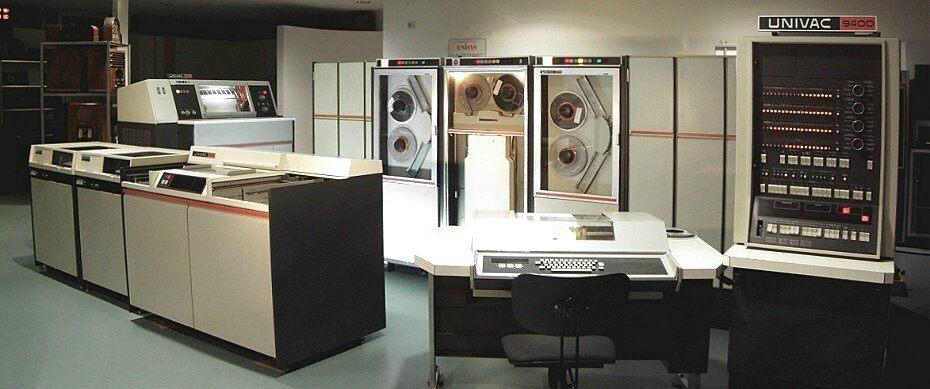In 1974 Ted Nelson, a visionary (or a hopeless dreamer, take your pick), self-published a book titled Computer Lib/Dream Machines. Personal computers had not even been invented yet 1. For most people, computers were these all-powerful machines that evoked a feeling of awe. Laypersons did not use computers — that was a task for a scientist. The vast majority of people were content with letting those scientists and engineers (the “Computer Priesthood” in Ted Nelson’s words) decide how to use them.

UNIVAC 9400, source: Wikipedia
Ted Nelson wrote his book because he felt that computers in 1970 were no harder to understand than other day-to-day machinery. (He wrote that “Computers are as easy to understand as cameras.”) His book was essentially a manifesto against the centralization of computing hardware and for the dissemination of what I call “brainware,” that is, the know-how to write software to make the hardware useful for your own personal purposes.
Nelson’s central idea was that computers could and should be under your full control. Even a layperson could gain enough computer literacy (i.e., expand his or her “brainware”) to use a cheap computer on his desk for all kinds of creative purposes — instead of the Machine assuming control of your world, you gain control of the Machine.
Instead of the Machine assuming control of your world, you gain control of the Machine
He was, of course, right. His ideas, paired with cheap desktop computers that started appearing in the late 70s, resulted in an explosion of amateur programmers using cheap Personal Computers (PCs) for all kinds of things. The invention of the web (in 1989) and Linux (in 1991) and their popularization in the late 90s accelerated the process. Millions of people in industrialized countries (and quite a few in developing countries) grew up in the 80s and 90s learning how to using cheap computing resources. This created an entire generation of so-called knowledge workers, which produced a massive spike in productivity in the 1990s and 2000s. This era lasted until maybe 2009 (I place the creation of blogs and RSS technology at the peak of this era.)
The following features defined the PC era:
-
You really own it — you have “root” access to it; this means you can the hack entire software stack down to the operating system.
-
Since it is open, you can install a free (as in free speech, not free beer) Operating System that will give you complete control of the software running on your PC.
-
You can build and install your own software for it; you just need to install a freely available compiler or interpreter, write your own program and distribute it on the internet, you don’t need to ask a central authority for permission.
Now contrast that with current smartphones and tablets, where none of the above is easy to do, because it is highly discouraged or made impossible by legal, technical or political reasons. We are regressing to locked down devices controlled by a new Computer Priesthood.
The motto printed on the cover of the book was “You can and must understand computers NOW.” I feel the current age calls for a renewed motto, “You can and must understand your devices NOW.”
-
The Altair 8800, the first personal computer, was released a year later. ↩︎